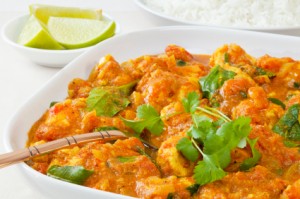-
Multiple Meals
0
 Dawn Cromar explains how you can avoid turning the dinner table into a daily war zone . . .
Dawn Cromar explains how you can avoid turning the dinner table into a daily war zone . . .Preparing meals can be a monotonous affair; trying to think of something different every night and trying to please a number of tastes can be tricky.
I have always tried to be quite firm with my children; if they don’t want to eat what has been prepared for them, I am very reluctant to then rustle something else up. Obviously if it’s something they really don’t like, I won’t try to force feed them (I have some unhappy memories from my childhood after being left at the table on my own to finish mince and tatties – or potatoes – as it was something I really didn’t like). But if I know they do like it and they’re just pushing their luck, I do try my best to persevere with them. Bribery with pudding often goes a long way with children!
However, you don’t want dinner to turn into a daily battle with your children (or your partner), so to get round this there are occasions when I will prepare variations of the same meal in order to satisfy everyone’s palate.
For example, fajitas are very popular in our household – but not with my husband. But since the rest of the family enjoy the soft tortillas with marinated chicken and vegetables, I will sometimes make a Chinese influenced stir fry for him as a compromise. It doesn’t take a lot of extra work – the core ingredients are almost identical – it just means washing up an extra pan really!
The same can be said for curry nights; again this isn’t one of my husband’s favourites as he isn’t a lover of spicy foods. So I usually either make a mild curry and then spice it up for myself once I’ve taken his out, or I will make curry when he isn’t home.
It may sound complicated to change your recipe to suit multiple tastes, but the curry dish for example, isn’t too tricky to alter. You could of course prepare two different curries in two separate pans, or you could just add additional spices when you’ve removed portions for the diners requiring milder tastes.
Our curry is a simple one; I begin by heating olive oil in a wok and adding onion, a chopped apple, some grated root ginger and around four cloves of pressed garlic and frying until soft. I then brown the chicken (one diced breast per person) and begin adding spices as well as some tomato purée. This is where tastes are very subjective and you can add as much or little spice as you prefer.
I put in about a teaspoon of mild curry powder, before adding a sprinkling of chilli powder, turmeric, ground ginger, paprika, garam masala and mixed herbs. I then add in a tin of chopped tomatoes and bring the mixture to the boil slowly, before reducing the heat and leaving to simmer. Meanwhile, begin boiling your rice and add a spoonful of pilau rice seasoning to the water.
When your sauce has simmered for around 15-20 minutes and your chicken is thoroughly cooked, season with salt and pepper. At this stage, I would add a spoonful of crème fraiche to make it a little creamier (especially for those who don’t favour strong spices). You can add spices to taste or put in a bit more crème fraiche or tomato purée if you want to take a bit of the heat out.
At this stage, I would remove portions for my husband and the kids, and I am free to add in a bit more curry powder and any other spice I fancy. Then garnish with a little coriander and serve with the pilau rice and naan bread.

